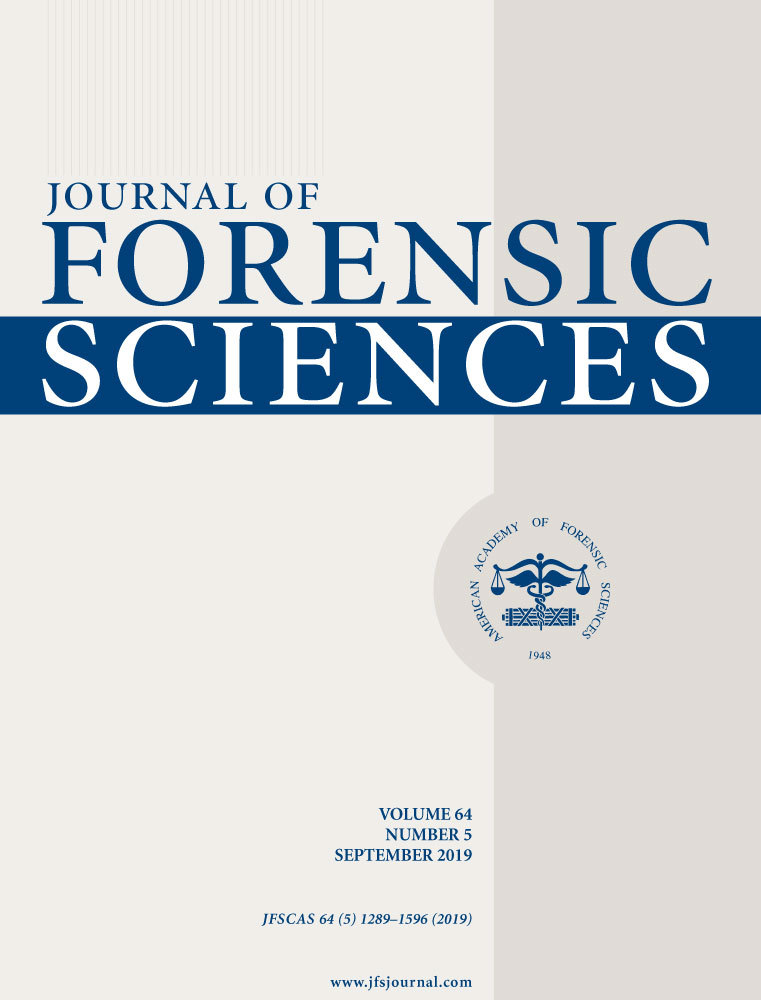Detection and Classification of Ignitable Liquid Residues in the Presence of Matrix Interferences by Using Direct Analysis in Real Time Mass Spectrometry†, ‡
Abstract
Conventional Gas Chromatography-Mass Spectrometry (GC-MS) methods for the analysis of ignitable liquids (ILs) are usually time-consuming, and the data produced are difficult to interpret. A fast IL screening method using direct analysis in real time mass spectrometry (DART-MS) is proposed in this study. GC-MS, QuickStrip DART-MS, and thermal desorption DART-MS methods were used to analyze neat ILs and thermal desorption DART-MS without extraction was used to analyze ILs on five substrates (e.g., carpet, wood, cloth, sand, and paper). Compared to GC-MS, DART-MS methods generated different spectral profiles for neat ILs with more peaks in the higher mass range and also provided better detection of less volatile compounds. ILs on substrates were successfully classified (98 ± 1%) using partial least squares discriminant analysis (PLS-DA) models based on thermal desorption DART-MS data. This study shows that DART-MS has great potential for the high-throughput screening of ILs on substrates.




